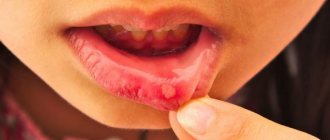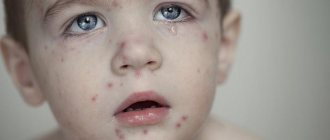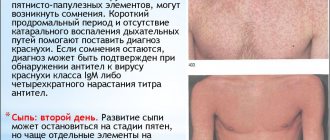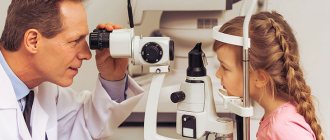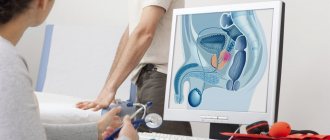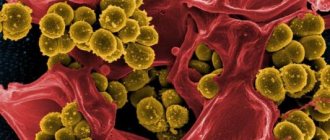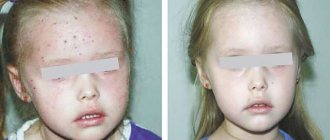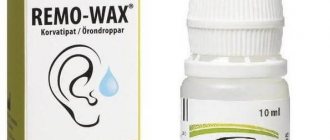How to avoid motion sickness in transport?
- Some children get sick more after eating, others before eating. Therefore, it is best to eat an hour and a half before the trip. What should the food be like? You should limit your consumption of fatty, sweet foods, and carbonated drinks. And, of course, you don’t need to overeat.
- Another important point: during the trip you need to swallow more often (drink cold water, suck mint candies). This reduces the likelihood of nausea and vomiting.
- In our body, the vestibular apparatus (inner ear and vision) is responsible for balance, so it matters where a child or an adult sits. In an airplane, the place where there is least vibration is the place near the wing; in a car or bus - front seats; on a train, it’s better to sit by the window and in the direction of travel, but on a ship, it doesn’t matter where, you’ll get motion sickness everywhere. During the trip, it is advisable to look into the distance.
- As for fresh air: it is also very important that it comes in. For example, in your car you can open the window, in an airplane you can sit your child in the middle and point 3 fans at him. This way, fresh air will circulate, which will alleviate motion sickness.
- Overheating is a factor that can increase the likelihood of motion sickness, as the mucous membranes of the mouth and nasal cavity dry out.
- Car air fresheners with different scents also increase the likelihood and provoke motion sickness, so before the trip you need to take care of your car, thoroughly wash and air it.
- If you know that your child gets sick after a certain time in the car, make stops and take your child for a walk outside. This will be good prevention.
- Today, physical methods of prevention to alleviate the condition of motion sickness in transport, namely acupressure, do not lose their relevance. The first point is located on the inner surface of the shoulder. From the wrist, we apply three fingers of the one who is sick and measure a point in the center, with gentle pressure we rub this point. The second point is located below the earlobe, between the neck muscles and the angle of the lower jaw. These points can be massaged simultaneously and alternately on the hands. In time - until the condition improves.
- One of the good ways to prevent motion sickness is various physical training and activities: playing sports, swinging on a swing, doing exercises in an upside-down position, etc. This way you prepare the child’s body not only for transport, but also for a flight into space.
- Regarding medications. They can also be used when you realize that none of the above will help or when it is not possible to use the above methods.
Suitable for children aged 3 years and older:
- Dimenhydrinate (Dramina, Aviamarin) tablets 50 mg
- Cocculin tablets homeopathic
Suitable for children aged 6 years and adults:
- Avia-sea homeopathic tablets
Suitable for children aged 4 years and older:
- Vertigohel homeopathic tablets
You can also try patches and bracelets. Their effectiveness has not been proven; there are cases when they help and when they do not.
Symptoms of motion sickness
Signs of motion sickness develop gradually. It all starts with feeling unwell, yawning, and deep breathing. The skin becomes pale and saliva is produced profusely. A sign of irritation of the peripheral nervous system is cold, sticky sweat.
When experiencing motion sickness, the first symptoms may include:
- drowsiness;
- dizziness;
- headache;
- feeling tired.
They are followed by nausea and vomiting, and coordination of movements may be impaired. If the trip is long, seasickness leads to a decrease in blood pressure. Uncontrollable vomiting can cause severe dehydration.
Each person experiences motion sickness with a different set of symptoms. Therefore, the predominance of signs of disorders in the nervous system, digestive tract, and cardiovascular system is distinguished. But most often there is a mixed form.
Is a doctor needed when a child is rocking in transport?
If the child felt unwell in transport, as well as within an hour after the stop, then you need to see a doctor and sort out this issue.
Since motion sickness is a disruption of the connection between the vestibular system and vision, the child may have problems with vision (sharpness, astigmatism, strabismus), diseases of the ENT organs (the child had otitis media). Therefore, it is necessary to identify these diseases and treat them.
If you have had otitis, preventing motion sickness on an airplane is to use vasoconstrictor drops in the nose before takeoff and especially before landing.
1.What is seasickness?
If you've ever felt sick while on a boat or on an airplane, then you know what seasickness
.
Or, more simply put, you understand what the phrase motion sickness
. Although motion sickness is not considered a long-term health problem or serious illness, motion sickness can make life very uncomfortable, especially if you travel frequently.
People can get motion sickness while traveling in cars, on planes, trains, on attractions, on boats and ships. Video games, flight simulators, and even studying objects through a microscope can also cause motion sickness. What these activities have in common is that the eyes see some movement, but the body does not feel it.
According to statistics, children from 5 to 12 years old, women and older people are more likely to suffer from motion sickness. And babies under 2 years old almost never get motion sickness!
As a rule, symptoms of motion sickness in transport
there is general malaise, nausea, vomiting, headache, pallor and cold sweat.
A must read! Help with treatment and hospitalization!
2. Cause of motion sickness and seasickness
Cause of motion sickness and seasickness
refers to situations where the inner ear, eyes, and other parts of the body that detect movement send unexpected or conflicting signals to the brain. One part of the body responsible for balance (such as the inner ear, eyes, or nerves that help maintain balance) may sense that the body is moving, but other parts of the body do not feel the movement. For example, if you are in the cabin of a large moving ship, your inner ear may perceive movement in the waves, but your eyes will not see any movement. A conflict arises between feelings and, as a result, seasickness or motion sickness.
Visit our Therapy page
3.Remedies for motion sickness
In the fight against motion sickness in transport, it is best to try to prevent symptoms
, because if you are already getting motion sickness, it will be more difficult to stop the process.
If after moving you start to feel motion sick, the discomfort will go away only after you stop. If it is impossible to stop moving, reduce the symptoms of motion sickness
(nausea, discomfort) by sitting or lying in the area that moves the least.
On an airplane, sit near the wings. On a boat or ship, stay on the deck and look at the horizon. Or try sitting or lying down in a cabin in the center of the ship. Here are some more remedies for motion sickness:
- Move your head as little as possible. Try to keep your head still, lean on the headrest.
- If you are sailing on a ship, try to provide access to fresh air. On deck, look at one point on the horizon.
- When you are driving, do not read or watch TV.
- Avoid alcohol and heavy foods before traveling.
- During a long flight, eat small meals. Give preference to foods that are easy to digest.
- Try to avoid strong odors and spicy foods.
- Eat some dry crackers.
- Get some fresh air if possible.
About our clinic Chistye Prudy metro station Medintercom page!
Avia-More
These lozenges are sold without a prescription and are good for motion sickness in children. “Avia-More” is a homeopathic preparation, the main active ingredient here is sodium tetraborate with white hellebore and kukulvan. The tablets help the vestibular system adapt to all sorts of sensory influences that occur while driving. The drug is prescribed to children who often get motion sickness while traveling; the tablets relieve nausea, dizziness, weakness and general malaise due to “sea sickness”. You need to take Avia-More an hour before your trip, slowly dissolving the tablet in your mouth. The following dosage regimen is one tablet every couple of hours (but no more than five tablets per day). Contraindications:
deficiency of glucose and galactose, galactosemia.
Air-sea
Materia Medica Holding, Russia
- sea and air sickness;
— motion sickness in motor vehicles (prevention and treatment). from 80
5.0 1 review
496
- Like
- Write a review
Read also : Top 10 best colic remedies for newborns In most cases, colic in newborns occurs due to the immaturity of the digestive system. Fortunately, you can buy medicine at the pharmacy that will relieve your baby of abdominal pain.
Aminalon
This drug for motion sickness is available in the form of tablets and powder in sachets. Dispensed with a doctor's prescription. The active substance of the anti-sickness remedy is gamma-aminobutyric acid, which has a nootropic effect. "Aminalon" improves metabolic processes in the brain, stimulates the removal of metabolic products from tissues. These tablets are prescribed for various types of motion sickness, as well as to stimulate mental development and for various neurological problems. For motion sickness, the drug is taken twice a day, the course is 3-4 days (in advance, before the trip). Aminalon has virtually no side effects. Contraindications:
allergy to the components of the product, individual intolerance to the drug.
Aminalon
Planet organics
Vascular diseases of the brain (atherosclerosis, hypertension) and dynamic disorders of cerebral circulation, post-stroke period and brain injuries (to restore memory, speech), dementia, alcoholic polyneuritis, motion sickness symptom complex.
from 81
575
- Like
- Write a review
If a child gets seasick
If the baby still gets seasick, then your task is to alleviate the child’s condition.
- Monitor the temperature in the car, do not let your child get too hot. This means that you should not dress him too warmly.
- You can use a small fan to keep your baby cooler, but don't overdo it, or your baby may get cold.
- You can attach a special screen to protect from the sun on the car window so that bright light does not interfere with looking ahead.
- Be sure to evaluate the ventilation in the car. Do not allow strong perfume or food odors.
- Cigarette smoke increases nausea if the child is already seasick, and can also provoke nausea. Do not allow anyone to smoke in the car.
- If your baby vomits, give him a couple of sips of breast milk, formula, or cool water to prevent dehydration.
- If the child has vomited several times, it is better to give a medication for dehydration - a rehydrant, which can be bought at the pharmacy.
- If you suspect your baby might vomit again, cover your baby's chest and stomach with a towel, as it will be easier to remove the towel than to completely change your baby's clothes.
What about medications for motion sickness?
In fact, medications for motion sickness are unsafe and have a number of side effects.
Despite this, the most effective drugs for motion sickness are drugs with Dimenhydrinate, for example, Dramamine, Aviamarin, but they are allowed from 1 year and are prohibited for pregnant and lactating women. It’s up to you to decide whether to give your child such a drug or not, but do not forget to consult with your pediatrician.
It happens that motion sickness strikes for the first time and the child vomits in the car, although this has never happened before. Do not panic! Stop the car, wash and change the baby, calm the child down, because this is a new condition for him. Give your child water, walk in some fresh air, and wait until your child feels better before driving again. Motion sickness is always unpleasant even for an adult, and even more so for a baby. But if preventive measures are observed, it is quite possible to alleviate the child’s condition. Take care of yourself and your loved ones and be healthy!
List of medications that you need to have in your first aid kit:
1. Remedies for poisoning, for diarrhea, to improve digestion.
First aid for poisoning is to rinse the stomach with boiled water and then induce vomiting. The next stage is taking a universal enterosorbent. Enterosorbents are medications, different in composition and properties, that bind toxic (harmful, toxic) substances in the gastrointestinal system due to the adsorption property (absorption, absorption and retention of toxic substances) of the sorbent. Since most often a person does not know the causative agent of the disease, it is therefore recommended that in case of poisoning, choose drugs that absorb most toxic substances: “Smecta”, “Sorbex”, “Enterosgel”, activated carbon, Atoxil”
Remedies for diarrhea: “Smecta”, “Enterosgel”, activated carbon, “Emmodium”, “Lapirpamid”.
To improve digestion - “Mezim”, “Festal”, which will improve digestion in order to avoid unpleasant consequences after getting acquainted with the local cuisine.
2. Painkillers
A traveler's first aid kit should also have painkillers - you never know what will happen. When going abroad, we take proven painkillers “Nise”, “Nurofen”, “Pentalgin” and so on. In addition, antispasmodics for smooth muscle spasms, for example, “Spazmalgon” or “No-shpa,” will not hurt.
3. Antipyretics: acetylsalicylic acid, paracetamol; means that relieve cold symptoms “Tera Flue”, Fervex, “Antigripin”, “Coldrex”, etc.”
4. Antibiotics: if a situation arises that you need an antibiotic, then you cannot do without the help of a doctor, and in this case, health insurance and contacting a local specialist will help. Your insurance will cover the costs. This is the right way to treat serious problems and diseases.
5. Antihistamines (anti-allergy) drugs: even if you do not have allergies, take on your trip just in case (especially if you are going to exotic countries) tablets “Cetrin”, “Loratadine”, “Claritin”, “Zyrtec” - who knows how Will the body react to certain foods or plants? Well, if you suffer from allergies, purchase medications that have already been tested by you. "
6. Remedies for injuries: iodine or brilliant green in the form of a pencil or felt-tip pen, bactericidal patch, bandage; for wound healing, any ointment: Levomikol, Bipanten, Solcoseryl.
7. Remedies for motion sickness: Dramina, Aerol.
8. Remedies for tanning and sunburn
When packing a first aid kit for a trip abroad, do not forget that customs legislation prohibits tourists from exporting certain medications abroad. If you are taking any drug (sleeping pills, strong painkillers) that contains narcotic or psychotropic drugs, then you need to act like this:
- Check whether the drug is allowed to be imported into the country you are traveling to; they can only be carried with you if you have a prescription.
- Receive a prescription containing your first and last name, diagnosis, drug name and recommended dosage regimen. The prescription must be correctly completed by the attending physician, then certified by the seal of the medical institution and translated into English.
- Transport medications in original packaging with instructions included.
- Declare them at the airport of arrival.
How to pack a first aid kit for a trip?
- Take with you on vacation only well-tested medications that are not in doubt;
- Check the expiration date of the medications you take from your home medicine cabinet.
- Consider the temperature conditions for storing medications. You may need a cooler bag to transport them (they can be small).
- Leave your medications in their original packaging - this will help avoid unnecessary questions at the border.
- Save the instructions so that you can check the international name or dosage at any time.
- Prefer tablets and powders to liquids and sprays. This way, you don’t have to comply with the norm if you are flying only with hand luggage, or worry about whether the bottle will break in your suitcase.
- It is advisable to take only medications needed during the flight in your hand luggage (liquids should be in bottles with a volume of up to 100 ml). If you have a lot of medications, pack a basic first aid kit in your luggage.
- If you have a chronic pathology, include in the list of the traveler's first aid kit the medications that you regularly take;
- It is advisable to consult a doctor before going on vacation.
